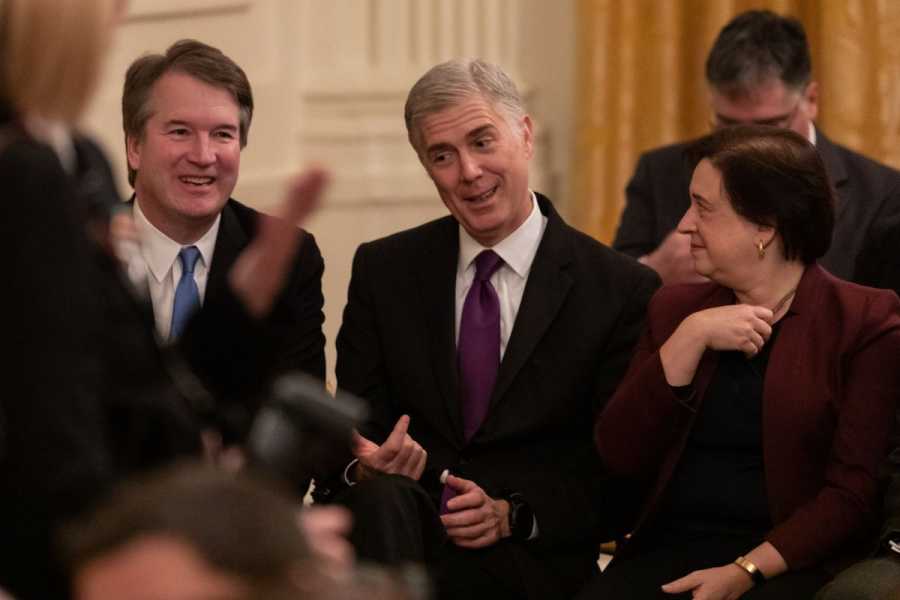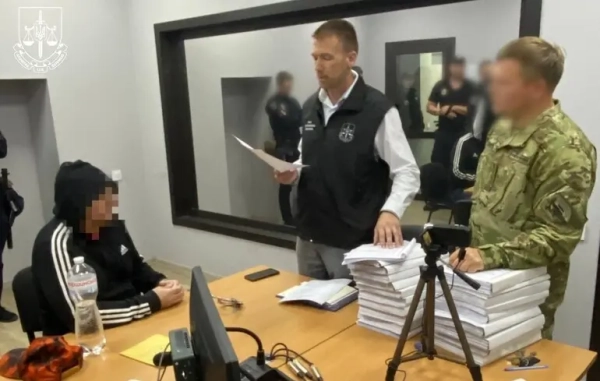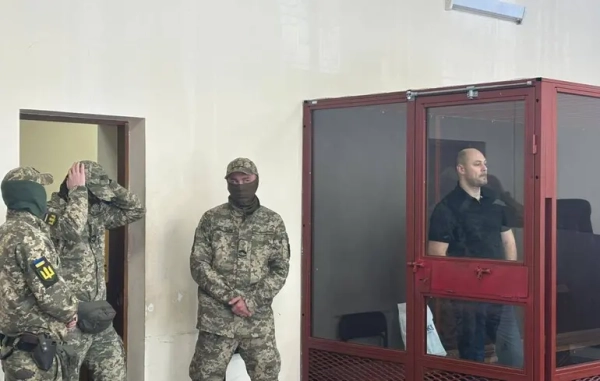The justices appear to have no idea when they should get involved with online disputes between government officials and their constituents.

Three justices attend an event at the Trump White House. Cheriss May/NurPhoto via Getty Images Ian Millhiser is a senior correspondent at Vox, where he focuses on the Supreme Court, the Constitution, and the decline of liberal democracy in the United States. He received a JD from Duke University and is the author of two books on the Supreme Court.
A pair of Supreme Court cases asking what limits the First Amendment places on government officials who use social media seemed to perplex the justices on Tuesday. The arguments in O’Connor-Ratcliff v. Garnier and Lindke v. Freed featured a cacophony of questions about cat pictures, spontaneous grocery store conversations, and a simply dizzying array of proposed legal rules — none of which seemed likely to fully inform public officials what they may and may not do online.
The cases involve similar issues. In O’Connor-Ratcliff, two school board members in California blocked a pair of constituents on Facebook or Twitter, and then were sued for doing so. In Lindke, a city manager in Michigan blocked a member of the public from his Facebook page, and was likewise rewarded for doing so with a lawsuit.
Ordinarily, of course, a dispute over a social media user’s decision to block someone online would never belong in federal court. But the First Amendment rules governing public officials are very strict, and they almost never permit a government official to engage in “viewpoint discrimination.” So, if such an official blocks someone because they disagree with that person’s opinions or do not want those opinions to appear next to their own social media posts, that potentially raises very serious constitutional problems.
That said, the specific question presented to the Supreme Court in O’Connor-Ratcliff and Lindke is not whether these officials violated the First Amendment. Instead, the two cases deal with a surprisingly difficult threshold question: whether those officials were acting within the scope of their authority as government officials — or, to use the language of the law, whether they were engaged in “state action” — when they blocked the offended plaintiffs.
As a general rule, the Constitution only constrains government officials when they are exercising state authority. An off-duty police officer, for example, can tell a friend they meet at a bar to “shut up,” even though the First Amendment would prohibit a cop from policing a law-abiding citizen’s speech while the cop is on duty.
But, as the arguments in O’Connor-Ratcliff and Lindke revealed, it is exceedingly difficult to come up with a legal test that can sort through which social media activity by government officials counts as state action and which activity is merely private action that is beyond the reach of the Constitution.
The internet has made a difficult constitutional question nearly impossible
The Supreme Court has long fretted over the fact that it is very difficult, at least in marginal cases, to determine whether a particular act by a government employee should count as state action or private action. As the Court said in Jackson v. Metropolitan Edison (1974) — a case decided long before anyone had even uttered the word “Twitter” — “the question whether particular conduct is ‘private,’ on the one hand, or ‘state action,’ on the other, frequently admits of no easy answer.”
So it’s probably not surprising that the justices spent far more time poking holes in the proposed sorting mechanisms various lawyers proposed to them on Tuesday than they did articulating anything that even vaguely resembled a workable legal test to distinguish between state and private action online.
Both Hashim Mooppan, the lawyer representing the school board members in O’Connor-Ratcliff, and the Biden administration (which filed briefs in both cases arguing for narrow constraints on when government officials can be sued for their social media activity) placed a great deal of weight on the fact that the social media accounts belonged to the defendants themselves and not to the government. As the Justice Department argued in its brief, when past cases have asked whether someone may be excluded “from a forum … the existence of state action generally depends on whether the government itself owns or controls the property to which access has been denied.”
But none of the justices seemed open to extending this rule to online disputes; some of them openly mocked the proposal. As Chief Justice John Roberts quipped, there is no physical component to a Facebook page — it’s just a “gathering of protons” — so it seems quite odd to apply traditional concepts of property to virtual space.
Similarly, Justice Clarence Thomas questioned whether someone’s personal Facebook page counts as their private property at all. Facebook, after all, has the final power to delete or block a user. So why shouldn’t all social media accounts be understood as the property of a social media company and not of the individual or government entity whose name is on that account?
The lower courts in these two cases split on whether to use a legal test that is comprehensive and predictable, or one that provides more flexibility for judges to make precise decisions in difficult cases. The United States Court of Appeals for the Ninth Circuit, which heard the O’Connor-Ratcliff case, preferred a more flexible test that, among other things, asks whether a government official appeared to be acting within the scope of their job when they posted online.
The Sixth Circuit, meanwhile, opted for a more rigid-seeming test that asks whether the government official acted pursuant to an official “duty” or “authority” when they posted something online.
While a majority of the justices appeared to prefer the Sixth Circuit’s approach to the more flexible Ninth Circuit framework, however, it soon became clear that the Sixth Circuit’s framework raises as many questions as it answers. The Sixth Circuit, for example, defined an official’s duties to include only the formal obligations they are required to fulfill under a statute or other official policy. So if there’s no formal rule instructing a public official to post online, that probably means their online activity is not state action.
But this creates problems of its own. One of them, which several justices alluded to during the argument, is how the Court should approach “customary duties.” Elected officials, in particular, spend a tremendous amount of time communicating with constituents online and offline about what the government is doing and how the official is doing their job. As Justice Sonia Sotomayor said, elected officials tell her all the time that they are “on duty 24 hours a day.”
But most states don’t have laws that explicitly order elected officials to answer a constituent’s questions if they run into that constituent in the grocery store. And most states don’t have official rules requiring officials to maintain social media sites. So how is a court supposed to determine which of these communications are on-the-job communications and which ones aren’t?
As Justice Samuel Alito suggested, it is difficult to determine the scope of an official’s unwritten, customary duties. A too-expansive definition of those duties could lead to an official being sued because they blow off a constituent who wants to criticize a town mayor’s policies while the mayor is buying ice cream at the corner store.
And then there’s another problem: What should courts do with a government official who uses the same social media account both to conduct official business and to post personal content?
Suppose, to paraphrase a hypothetical offered by Justice Neil Gorsuch, that an official uses their Facebook account both to post cat pictures and to discuss official business. Now suppose that one of that official’s constituents hates cats, and posts so many nasty responses to the cat-related posts that the official eventually blocks the constituent. Because blocking this constituent will also exclude them from the official’s government-related content, did the government official violate the First Amendment here?
I could go on at some length listing the many difficult questions that various justices raised over the course of the arguments. But the important overarching point here is that these cases are very difficult. And it’s not clear that it is possible to come up with a clear-cut legal test that will easily allow judges to distinguish between state and private action online.
That’s terrible news for public officials, who may be reluctant to use social media if they don’t know what they need to do to avoid being sued. It’s also terrible news for their constituents, who may lose an important channel that allows them to communicate with their government. And it’s terrible news for the courts, which could be bombarded with lawsuits from online trolls if the Court hands down a vague legal test that can easily trigger future lawsuits.
But none of these unfortunate realities change the fact that there are no easy answers in O’Connor-Ratcliff and Lindke.
Sourse: vox.com






